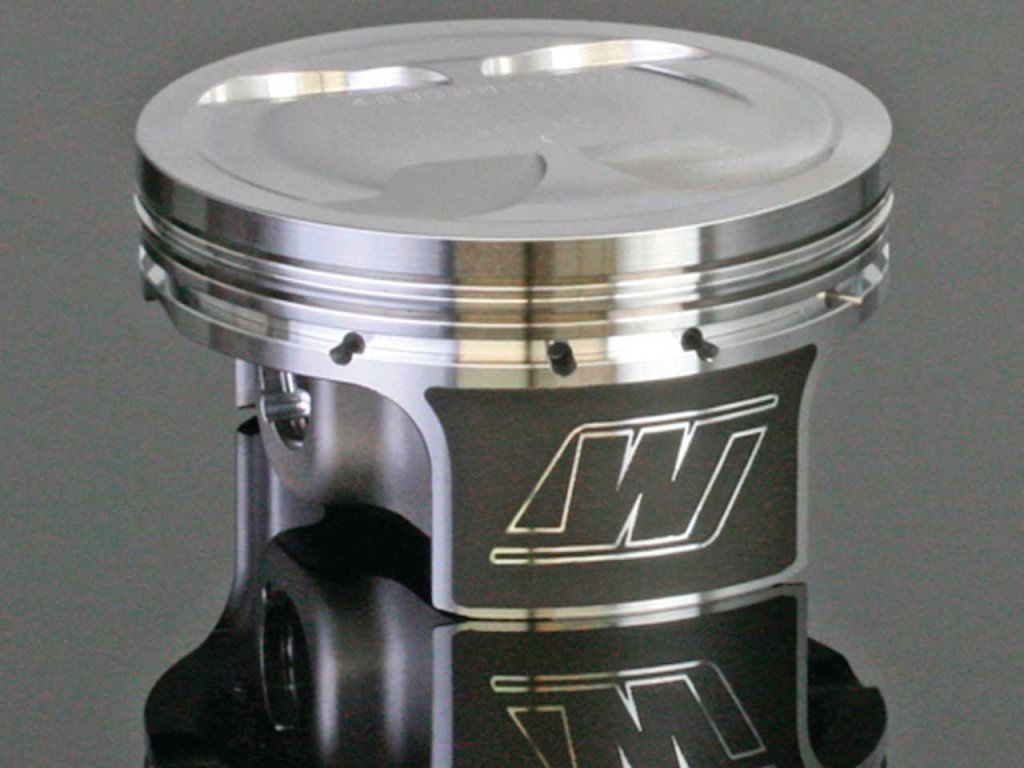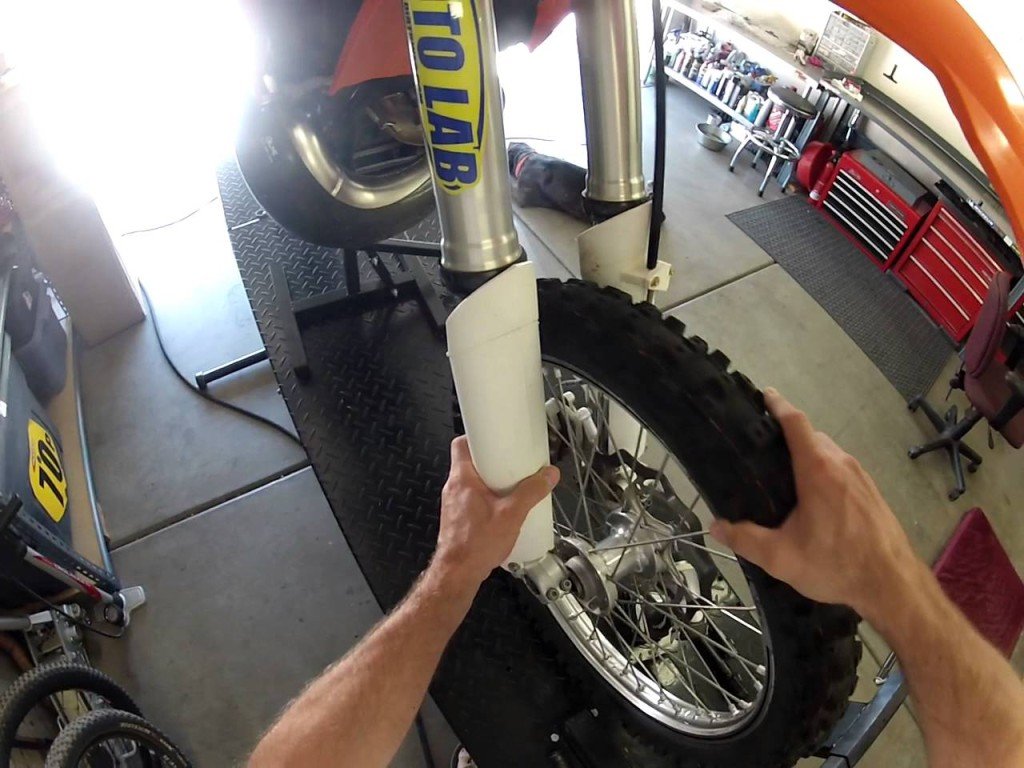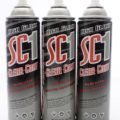 There are over 6000 different languages spoken in the world today. This statistic may or may not include obscure regional dialects and the dork jargon spoken so prevalently by Minecraft and World of Warcraft enthusiasts. Either way there’s an obvious, universal truth about language: if you can’t speak it, there’s bound to be a lack of communication.
Riding motorcycles creates its own unique diction and vernacular. There’s terminology for riding techniques, rider performance, and bike performance. In order of importance bike performance easily trumps the other two – riding technique can always be improved upon but if the bike doesn’t perform, the rider can’t be expected to. So of all the different vocabulary required to speak motorcycle, one of the most imperative ones to master is how to convey bike performance.
Rob Kozler is well versed in motorcycle performance linguistics. As the owner/operator of Moto Lab and a factory certified mechanic who’s worked with professional GNCC and Endurocross racers, Rob knows what he’s talking about. This doesn’t necessarily mean he knows what the hell you’re talking about, particularly if you can’t speak the language. Telling a mechanic that something feels loose or there’s a noise coming from the thingy is incredibly vague and doesn’t really disclose much.
So in the spirit of helping me to help you, or maybe helping you to help yourself, or perhaps helping you to help someone else help you, Rob was kind enough to take a moment out of his busy schedule and assist me in creating a glossary of terms that allows novice riders to communicate to mechanics how well their bike is working. Since many issues are easily expressed (when I twist the throttle, the muffler falls off) or conveyed without words (like when the front wheel looks like a capital D), we’ll stick to terms that apply to the two more intricate components of a bike: engine and suspension.
Here’s a compilation of language and lingo that’ll help any layman understand what their bike should be doing and relay what it isn’t doing:
There are over 6000 different languages spoken in the world today. This statistic may or may not include obscure regional dialects and the dork jargon spoken so prevalently by Minecraft and World of Warcraft enthusiasts. Either way there’s an obvious, universal truth about language: if you can’t speak it, there’s bound to be a lack of communication.
Riding motorcycles creates its own unique diction and vernacular. There’s terminology for riding techniques, rider performance, and bike performance. In order of importance bike performance easily trumps the other two – riding technique can always be improved upon but if the bike doesn’t perform, the rider can’t be expected to. So of all the different vocabulary required to speak motorcycle, one of the most imperative ones to master is how to convey bike performance.
Rob Kozler is well versed in motorcycle performance linguistics. As the owner/operator of Moto Lab and a factory certified mechanic who’s worked with professional GNCC and Endurocross racers, Rob knows what he’s talking about. This doesn’t necessarily mean he knows what the hell you’re talking about, particularly if you can’t speak the language. Telling a mechanic that something feels loose or there’s a noise coming from the thingy is incredibly vague and doesn’t really disclose much.
So in the spirit of helping me to help you, or maybe helping you to help yourself, or perhaps helping you to help someone else help you, Rob was kind enough to take a moment out of his busy schedule and assist me in creating a glossary of terms that allows novice riders to communicate to mechanics how well their bike is working. Since many issues are easily expressed (when I twist the throttle, the muffler falls off) or conveyed without words (like when the front wheel looks like a capital D), we’ll stick to terms that apply to the two more intricate components of a bike: engine and suspension.
Here’s a compilation of language and lingo that’ll help any layman understand what their bike should be doing and relay what it isn’t doing:
 ENGINE PERFORMANCE:
BOG – A noticeable hesitation at immediate throttle opening, usually indicating a rich condition with the fuel/air mixture in the carburetor. Accelerator pump timing is a common culprit, as it comes on too soon and too strong.
RICH – Ratio of fuel is greater than air when mixed in the carburetor, usually indicated by a puff of black smoke when accelerating or heavy soot accumulation at the tail pipe.
HESITATION – A noticeable hesitation anywhere in the acceleration ascent, usually indicating a lean condition with the fuel/air mixture in the carburetor. This term also describes the sensation felt by a married man the moment before he drops $9500 on a brand new KTM 350.
LEAN – Ratio of air is too much when mixed in the carburetor.
FALLING ON ITS FACE – Engine suddenly loses power and stalls during acceleration, usually caused by debris lodged in the main jet of the carburetor.
CHATTER – General description for many conditions involving mechanical oscillation or vibration. Also describes the tedious noise heard when your wife or girlfriend talks to you incessantly while you attempt to work on your bike.
SIEZED – The bonding of two separate parts or dissimilar materials. Also referred to as grenaded, screwed, or, as the Vietnamese call it, phouc’d.
With the introduction of fuel injection to more models of dual sport motorcycles each year, the terminology that refers to carburation will slowly become obsolete. In its place will be a whole new set of diagnostic terms, most of which will be laced with profanity as the more technical method of fuel delivery can be more costly to repair and tune.
ENGINE PERFORMANCE:
BOG – A noticeable hesitation at immediate throttle opening, usually indicating a rich condition with the fuel/air mixture in the carburetor. Accelerator pump timing is a common culprit, as it comes on too soon and too strong.
RICH – Ratio of fuel is greater than air when mixed in the carburetor, usually indicated by a puff of black smoke when accelerating or heavy soot accumulation at the tail pipe.
HESITATION – A noticeable hesitation anywhere in the acceleration ascent, usually indicating a lean condition with the fuel/air mixture in the carburetor. This term also describes the sensation felt by a married man the moment before he drops $9500 on a brand new KTM 350.
LEAN – Ratio of air is too much when mixed in the carburetor.
FALLING ON ITS FACE – Engine suddenly loses power and stalls during acceleration, usually caused by debris lodged in the main jet of the carburetor.
CHATTER – General description for many conditions involving mechanical oscillation or vibration. Also describes the tedious noise heard when your wife or girlfriend talks to you incessantly while you attempt to work on your bike.
SIEZED – The bonding of two separate parts or dissimilar materials. Also referred to as grenaded, screwed, or, as the Vietnamese call it, phouc’d.
With the introduction of fuel injection to more models of dual sport motorcycles each year, the terminology that refers to carburation will slowly become obsolete. In its place will be a whole new set of diagnostic terms, most of which will be laced with profanity as the more technical method of fuel delivery can be more costly to repair and tune.
 SUSPENSION PERFORMANCE:
STROKE – The considered length of usable suspension travel.
FORK DIVE – When the front suspension blows through the stroke without bottoming (insert your own perverted joke here). Usually caused by forks being under sprung or ultra light valving.
BOTTOMING/BOTTOMED OUT – Using the total travel of the suspension. This may not always be a negative term, like when you accidentally huck yourself off a 30 foot cliff, land on flat ground and live to tell about it.
HARSHNESS – An uncomfortable jolting sensation on the compression stroke. Could be caused by a multitude of factors.
WALLOWING – Generalized negative description of uncontrolled compression or suspension not staying up in the stroke. Usually accompanied by terms such as: flailing, marshmallow, and boat on rough seas.
STACKING – Suspension lacks adequate rebound over a series of bumps. Also referred to as packing.
KICKING – Extreme harshness that throws the wheel off the ground when contacting a square-edged bump. Can be caused by excessive high-speed compression or severe bottoming.
TRACKING – Holding a defined line, whether it’s through a turn or a set of whoops.
STICTION – Static friction or lack of movement between two surfaces.
SPRING RATE – The measured stiffness of internal fork springs or external shock spring.
REVALVING – Changing internal dampening valves.
Rob did emphasize that suspension is affected by more than just forks and a shock. Chassis issues, crusty linkage, and lack of bearing maintenance can all mimic or exacerbate suspension problems. Even tire age can have an effect – rubber ages more like a hockey puck than a fine wine. Before you eagerly show off your fluency in suspension diagnostics, make sure it’s actually your suspension that has the issue.
Rob also pointed out that troubleshooting lingo can be subjective from person to person. A lot of this terminology is universal, but keep in mind that the person you’re talking to may not know what they hell they’re talking about!
SUSPENSION PERFORMANCE:
STROKE – The considered length of usable suspension travel.
FORK DIVE – When the front suspension blows through the stroke without bottoming (insert your own perverted joke here). Usually caused by forks being under sprung or ultra light valving.
BOTTOMING/BOTTOMED OUT – Using the total travel of the suspension. This may not always be a negative term, like when you accidentally huck yourself off a 30 foot cliff, land on flat ground and live to tell about it.
HARSHNESS – An uncomfortable jolting sensation on the compression stroke. Could be caused by a multitude of factors.
WALLOWING – Generalized negative description of uncontrolled compression or suspension not staying up in the stroke. Usually accompanied by terms such as: flailing, marshmallow, and boat on rough seas.
STACKING – Suspension lacks adequate rebound over a series of bumps. Also referred to as packing.
KICKING – Extreme harshness that throws the wheel off the ground when contacting a square-edged bump. Can be caused by excessive high-speed compression or severe bottoming.
TRACKING – Holding a defined line, whether it’s through a turn or a set of whoops.
STICTION – Static friction or lack of movement between two surfaces.
SPRING RATE – The measured stiffness of internal fork springs or external shock spring.
REVALVING – Changing internal dampening valves.
Rob did emphasize that suspension is affected by more than just forks and a shock. Chassis issues, crusty linkage, and lack of bearing maintenance can all mimic or exacerbate suspension problems. Even tire age can have an effect – rubber ages more like a hockey puck than a fine wine. Before you eagerly show off your fluency in suspension diagnostics, make sure it’s actually your suspension that has the issue.
Rob also pointed out that troubleshooting lingo can be subjective from person to person. A lot of this terminology is universal, but keep in mind that the person you’re talking to may not know what they hell they’re talking about! 





